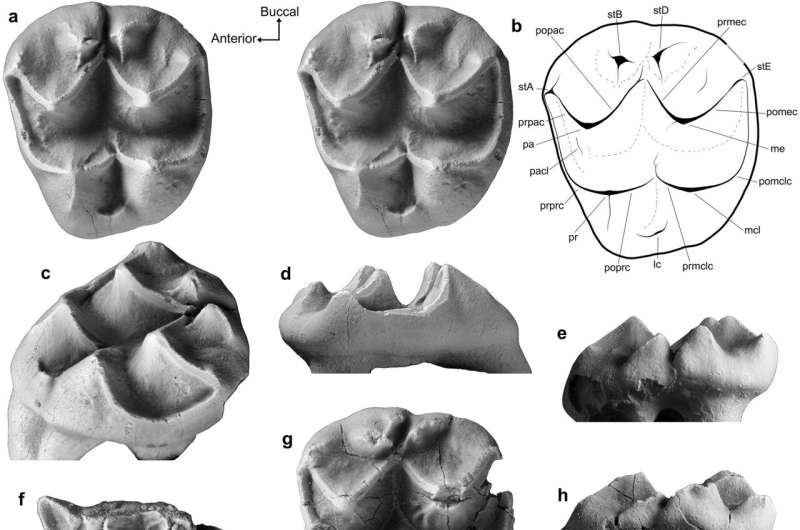September 5, 2023 report
This article has been reviewed according to Science X's editorial process and policies. Editors have highlighted the following attributes while ensuring the content's credibility:
fact-checked
peer-reviewed publication
trusted source
proofread
Fossil of oldest-known koala relative unearthed in central Australia

A small team of evolutionary biologists at Flinders University, in Australia, working with one colleague from the University of Salford in the U.K. and another from the University of California, Los Angeles, has found fossilized evidence of the oldest-known koala relative in a central part of Australia. In their paper, published in the journal Scientific Reports, the group describes the fossil, where it was found and how it fits into the history of marsupial evolution in Australia.
The fossil was excavated in Pwerte Marnte Marnte in Australia's Northern Territory. The study suggests the animal was approximately the size of a modern housecat and that it likely ate soft leaves. Fossils at the site have been dated back approximately 25 million years, during the Oligocene epoch. It was promptly named Lumakoala blackae. The find is considered important because it helps to clarify the history of mammalian evolution in Australia, particularly during a 30-million-year gap in the fossil record.
The research team is hoping that the study of L. blackae will reveal marsupial evolution during the gap years. To that end, they have used the fossilized remains as a basis for a computer analysis, which suggests that L. blackae was a member of what is now the koala family, or perhaps at least a reasonably close relative. They note that despite these findings, L. blackae also had features reminiscent of other ancient marsupials, such as Chulpasia and Thylacotinga.
The research team also notes that the discovery of L. blackae could also change our understanding of the evolutionary history of Chulpasia and Thylacotinga—prior evidence has suggested that they may have been related to marsupials from what is now South America. But L. blackae's existence suggests that the other two creatures may have been early relatives of modern marsupials living in Australia.
The team also notes that two other ancient species of koalas were found at the same dig site. They suggest the finds are likely to have a major impact on the study of marsupial evolution in Australia, because until now, no other fossilized remains of koala ancestors had ever been found in the Northern Territory.
More information: Arthur I. Crichton et al, A probable koala from the Oligocene of central Australia provides insights into early diprotodontian evolution, Scientific Reports (2023). DOI: 10.1038/s41598-023-41471-0
Journal information: Scientific Reports
© 2023 Science X Network





















